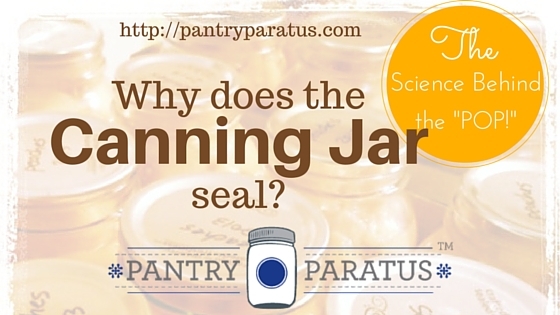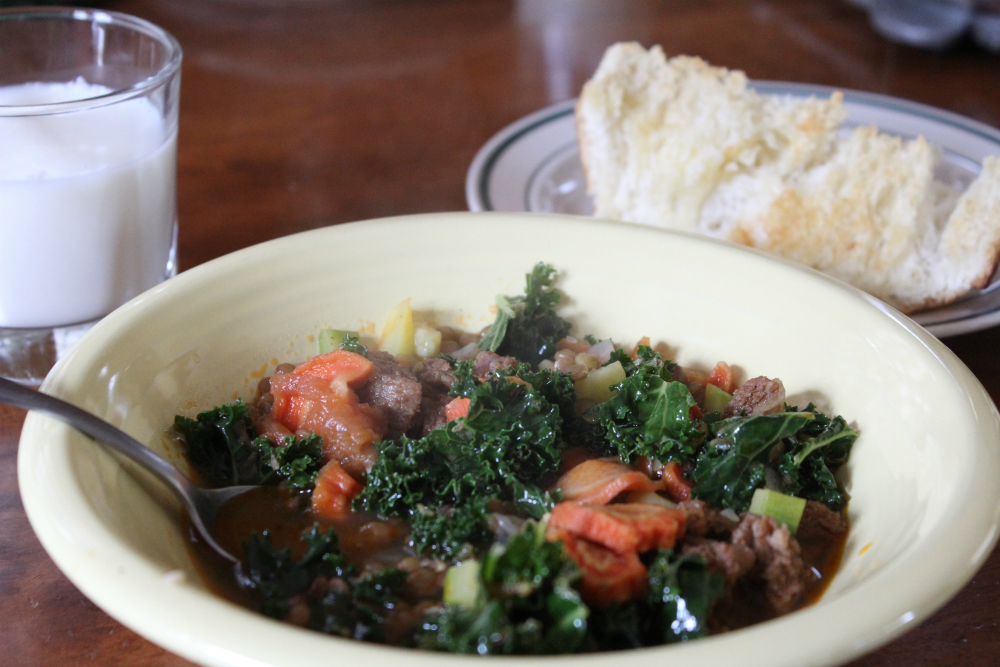
The “pop” sound of a canning jar makes me weak in the knees. If you heart canning, keep reading.
In fact, the absence of the “pop” sound is the main complaint I hear from people about the Tattler Reusable Canning Jar Lids–those don’t “pop.” They don’t actually need to, and you will know the jar is sealed if you cannot remove the lid. There are other reasons for using Tattler instead of Ball or Kerr, namely that they are made in America and are BPA-free with no “finishing spray” or other nasties that can leach into your foods. But let’s face it–most of us are addicted to the “POP!”
What causes the popping of the canning jar lid? The answer matters because it is what protects you from food-borne illnesses. There is more than one way to hear that reassuring popping sound and, sure, it’ll hold the lid tightly with several preservation methods–but that does not mean that the pop is protecting you.
The Science Behind the “Pop” of the Canning Jar Lid
When you place your food into that jar and then measure the headspace, you screw the canning jar lid onto the jar with a ring, trapping in regular, run-of-the-mill kitchen air. You know, the usual suspects: oxygen, carbon dioxide, nitrogen, the smell of your steaming applesauce you’re putting into the jar. And all gases go through a physical change when heated; most will expand if they have a place to go. But you tightened a ring around a lid, remember? You’d remember the time you didn’t.

Since your regular, run-of-the-mill kitchen air can’t escape during it’s expansion it is going to increase in….pressure (did you guess that?). Sort of like that feeling in your gut when you have expanding gas you won’t let escape. Yup, I went there, but you know what I am talking about now, don’t you? This comes down to the laws of thermodynamics.
Pressure, like temperature or water, likes to be even.
What happens when you put an ice cube in your hot soup?

The ice cube melts and the soup gets a bit cooler–it all hits a cozy equilibrium, right? Pressure likes to do the same. The contents of the jar (your famous applesauce and the air) underwent a physical change when they hit the boiling point because of the heat.
But now you move those jars to your kitchen towel on the counter, and just like your soup, the jars themselves begin to cool from the surrounding (regular, run-of-the-mill) kitchen air. And if it was the heat that changed the air pressure in the jar during the boiling, what will happen now? The air pressure decreases again.
POP!
The air pressure decreased, and it “sucks” the jar lid down because it created something of a vacuum. If the space inside the jar is no longer full of pressure, it will attempt to fill itself (for that equilibrium) by pulling in pressure from somewhere else. But the lid got in the way.
You’re essentially doing this. In your kitchen. But without so much flair:
[youtube_sc url=”https://youtu.be/JsoE4F2Pb20″ color=”white” theme=”light” modestbranding=”1″ rel=”0″ nocookie=”1″ showsearch=”0″]The Difference Between Water-Bath Canning & Pressure Canning (or Oven Canning, even)
The heat applied to your canning process, any canning process, will kill most bacteria. It will often change the texture, flavor, or the nutritional value too, but you will live another day to tell about it because you killed the bacteria before storing the food item. It’s because of the change to the texture and flavor that you want to be a minimalist when you can be one; if water-bath canning will work, it just does not make sense to succumb that food to full-on pressure canning when wholly unnecessary. Some foods fare better to high processing than others, anyway, but for the sake of the food don’t overkill.
Choose the right canning method.
Your local county extension agency may offer classes; super idea. We offer a great “how to” dvd (by Kendra from New Life on a Homestead) that will work you through proper canning procedures, too. You must know this–get this into your head–just because it “pops” doesn’t mean that food is safe. It does mean that no new air will get in, and that air is necessary for decomposition. However, not all bacteria is killed with a simple boiling; botulism, specifically, need to boil at an extremely high temperature and for awhile to die. Since botulism cannot live in highly acidic foods, the choices for killing it are either to ensure the acidity of the canned food or to switch from a water bath method over to the pressure canning method. Pressure Canning is required for low acid foods.

What about oven-canning? You know, that fun little Amish banana bread recipe that got passed around as a facebook meme–you bake it in a jar, pop on the lid, and let it cool on the counter. That is not actually canning. It makes a “pop.” It has increased in air pressure, and then it decreased again, sucking the lid down into a vacuum. It is not an approved canning method–the heat of the food item is not proven safe for killing the necessary bacteria to ensure safety.
The “pop” is just not enough to ensure food safety. You know what is? Make sure you always follow the latest safety standards put out by the USDA.
[jigoshop_category slug=”canning” per_page=”3″ columns=”4″ pagination=”yes”]

What if it doesn’t “pop”? Seems to be sealed, but I didn’t hear a pop. Do they ALWAYS pop??
My jars are popping while canning. Is that ok.?
I discovered that although water bath canning creates a vacuum and seals the jars, it does not create a strong vacuum so that the customer will hear a strong and reassuring “pop” sound. I am thinking of adding an additional step by drawing vacuum via a machine. When doing so the vacuum is enhanced and the “pop” becomes more reassuring. Do you see any problems with the packaging when doing do?
I just don’t know why an airtight seal would not be sufficient to prevent botulism? Please let me know
I stored leftover Bisquick in a canning jar, topping it with the lid and the ring. When I opened it about 2 months later, the lid was hard to remove and made a “pop” sound when I pried it off. Why? How could Bisquick make a vacuum while stored in a pantry at room temperature? I guess my real concern is if it’s same to use.
Barometric air pressure difference is most likely the cause. Air pressure was probably lower when you put the lid on and higher when you took it off.
What a misleading title and disappointing article. It does not explain how a canning jar lid seals much less the science behind the sealing. In fact, it mistakenly tells you to tighten the ring band so that the trapped air “cannot escape”! That is precisely what you don’t want. The air has to escape during the heating phase so that a vacuum will form during the cooling phase.